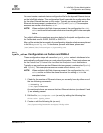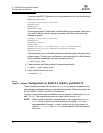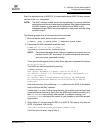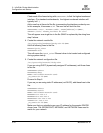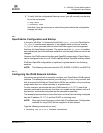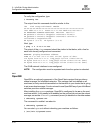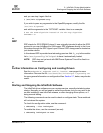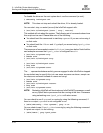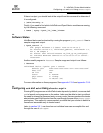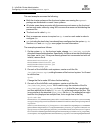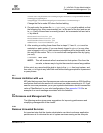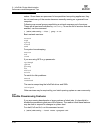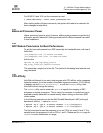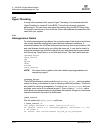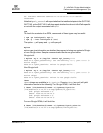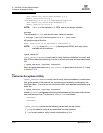
2 – InfiniPath Cluster Administration
Configuring ssh and sshd Using shosts.equiv
IB6054601-00 D 2-15
Q
If there is output, you should look at the output from this command to determine if
it is configured:
$ /sbin/ifconfig -a
Finally, if you need to find which InfiniPath and OpenFabrics modules are running,
try the following command:
$ lsmod | egrep ’ipath_|ib_|rdma_|findex’
2.8
Software Status
InfiniBand status can be checked by running the program ipath_control. Here is
sample usage and output:
$ ipath_control -i
$Id: QLogic Release2.0 $ $Date: 2006-09-15-04:16 $
00: Version: Driver 2.0, InfiniPath_QHT7140, InfiniPath1 3.2,
PCI 2, SW Compat 2
00: Status: 0xe1 Initted Present IB_link_up IB_configured
00: LID=0x30 MLID=0x0 GUID=00:11:75:00:00:07:11:97 Serial:
1236070407
Another useful program is ibstatus. Sample usage and output is as follows:
$ ibstatus
Infiniband device ’ipath0’ port 1 status:
default gid: fe80:0000:0000:0000:0011:7500:0005:602f
base lid: 0x35
sm lid: 0x2
state: 4: ACTIVE
phys state: 5: LinkUp
rate: 10 Gb/sec (4X)
For more information on these programs, See appendix C.9.9 and appendix C.9.5.
2.9
Configuring ssh and sshd Using shosts.equiv
Running MPI programs on an InfiniPath cluster depends, by default, on secure shell
ssh to launch node programs on the nodes. Jobs must be able to start up without
the need for interactive password entry on every node. Here we see how the cluster
administrator can lift this burden from the user through the use of the
shosts.equiv
mechanism. This method is recommended, provided that your cluster is behind a
firewall and accessible only to trusted users.
Later, in section 3.5.1, we show how an individual user can accomplish this end
through the use of
ssh-agent.



